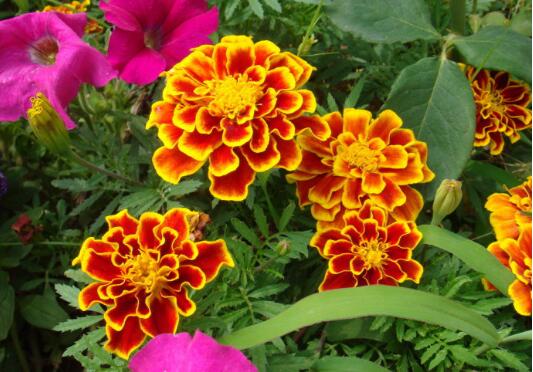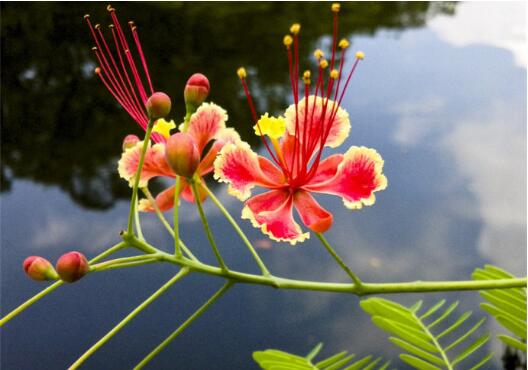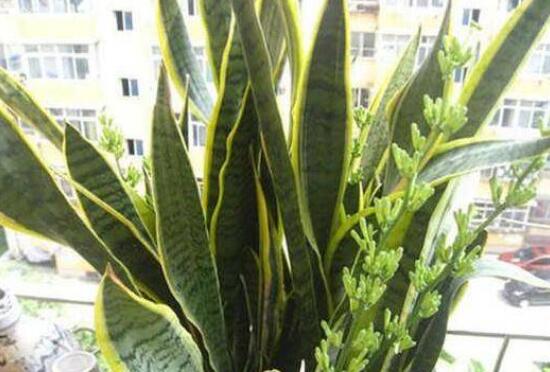What to do with the growth of malachite worms? pest control of malachite / 2 insect pests and 3 diseases
In the process of breeding peacock grass, the last thing we want to encounter is diseases and insect pests, this kind of problem is very harmful to the plant, which will not only affect the ornamental, but also lead to the phenomenon of death. What about the malachite worms? What should be done to control the diseases and insect pests of malachite? Next, the editor will take you to learn about it.
First, what to do when the malachite worms grow? find the reason.

If you want to know what to do with peacock grass worms, first of all, we need to understand what kind of insects grow. Only when we know the specific diseases and insect pests can we carry out targeted treatment, because the prevention and control methods of each kind of diseases and insect pests are different. The specific prevention and control details are below. Let's take a look.
II. Pest control of malachite (pest)
1. Shell worm
Shell insect is a kind of pest with high incidence during the growth of malachite grass, which mainly harms the leaves, branches and fruits of the plant. It will live on the branches and fruits of malachite grass for life, resulting in yellowing of leaves and withering of branches and shoots. In serious cases, it will also lead to the death of the whole plant.
Prevention and control methods: the high incidence of shell insects is in the early spring of each year, so we must pay special attention at this time. The most direct way to deal with this pest is to use pesticides for spraying. In terms of chemicals, we can choose 1500 times of malathion.
two。 Red spider
Among the diseases and insect pests of peacock grass, red spider is a relatively common one, and its high incidence period is in the summer every year, so at this time we must pay special attention to the fact that when this kind of pest occurs, the leaves of the plant will gradually turn yellow and white. if it is not treated for a long time, it will also lead to the phenomenon of plant wilting.
Control method: when we deal with the pest of red spider, we can directly use 40% diclofenac EC 1000-1500 times to spray, generally three times in a row can completely kill this pest.
III. Disease and pest control of malachite (disease)
1. Stem blight
This disease mainly threatens the stems and branches of peacock grass. At the initial stage of the disease, the stem will appear gray rash-like protuberance, the shape will be round or fusiform, which will affect the plant development, and even cause the stem branches to die in serious cases.
Control method: when dealing with the diseases and insect pests of this kind of peacock grass, we can use 40% chlorothalonil suspension 500 times to spray it, usually once a week or so, and then it can be cured after 2-3 times.
two。 Leaf spot disease
Leaf spot disease is a relatively high incidence of diseases and insect pests of peacock grass, and its high incidence period is from August to September every year, so we should pay special attention at this time. Leaf spot disease mainly threatens the leaves of the plant, when the disease occurs, there will be many round disease spots on the leaves, which will gradually expand with the passage of time, and finally cause the leaves to fall off gradually.
Control method: when we deal with leaf spot disease, we can use 1000 times of silazole ·prochloraz to spray the diseased plant, which is usually sprayed once every 7-10 days, and can be cured about 3-4 times.
3. Powdery mildew
Powdery mildew is a disease that may occur in many plants, and peacock grass is no exception. During the disease, many white dust-like objects appear on its leaves, and gradually spread with the passage of the event, and finally cover the whole leaf surface. Thus affecting its photosynthesis, making it appear the phenomenon of premature senescence.
Prevention and control methods: for this kind of malachite diseases and insect pests, we can use 1000 times of methyl topiramate wettable powder for prevention and control, usually once every 10 days, about 3 times can be cured.
What to do with the growth of insects in Aconitum? control of diseases and insect pests of Aconitum / 2 insect pests 2 diseases
Diseases and insect pests are the biggest headache for all plants, and aconitine is no exception. This kind of problem will not only affect its ornamental, but also lead to plant death in serious cases. So what if the aconitine grass has worms? How to control the diseases and insect pests of aconitum? Next, the editor will take you to learn about it.
First, aconitine grass worms how to do, find the reason
If we want to know what to do when aconitum grows, we must first understand what kind of insect is growing, and then deal with it pertinently, because the prevention and control methods of each kind of diseases and insect pests are different. As the saying goes, we should prescribe the right medicine to the case. In the following, there are various prevention and control methods of diseases and insect pests, friends who are troubled in this respect to have a look.
II. Pest control of aconitum (pest)
1. Aphids
Aphids are one of the most destructive pests on earth, which are harmful to many plants. Aconitum is one of them. The main damage of this pest is that adults and nymphs feed on leaves, stems, tender heads and tender panicle sap, resulting in a large loss of plant nutrients and wilting.
Control method: when we deal with the diseases and insect pests of this aconitum, we can use 40% imidacloprid water solvent 1500: 2000 times to spray it.
two。 Red spider
Red spider is a pest in many plants, and aconitum is no exception. The size of this pest is so small that it is generally difficult to find. The harmful way is to pierce the mouthparts into the leaves to suck the juice, which leads to the destruction of chlorophyll and yellowing, and in serious cases, it will cause the leaves to fall off or even lose light.
Control method: when dealing with the diseases and insect pests of this aconitum, if only individual leaves are injured, we can remove it. If more leaves are damaged, we can use 1500 times of dimethoate EC to spray the plant and kill the pest at once.
III. Pest control of aconitum (disease)
1. Black spot disease
Black spot is a disease caused by fungi, which mainly harms the leaves, petioles and shoots of Aconitum. During the disease, many purple-brown spots will appear in the affected parts, and with the passage of time, the spots will gradually expand, and the color will gradually change. Finally, the plant gradually withered.
Control methods: for this kind of aconitum plant diseases and insect pests, we can use methyl thiophanate or carbendazim to spray the diseased plants, usually once every 7-10 days, 2-3 times can be cured.
two。 White silk disease
White silk disease, also known as sclerotia root rot and sclerotia seedling blight, this disease mainly harms the rhizome or stem base of Aconitum seedlings. After the seedling is damaged, it will affect its ability to absorb nutrients and water, resulting in poor growth, serious branches and leaves will wither, when the disease spot ring stem for a week, it will lead to the whole plant withered.
Control methods: when we deal with the diseases and insect pests of this kind of aconitum, we can use Silk Dun diluted 800,800 times or Fengqian Root Protection 600,800 times to irrigate the diseased plants. Generally, the medicine is used every 10 days, and then it can be cured after 3 times.
What if the Centella asiatica grows worms? pest control of Centella asiatica / 2 insect pests 2 diseases
In the process of cultivating Centella asiatica, the last thing we want to encounter is diseases and insect pests, this kind of problem is very harmful to the plant, which not only affects the ornamental, but also leads to the phenomenon of withering and dying, so what about the Centella asiatica worms? How to control the diseases and insect pests of Centella asiatica? Next, the editor will take you to learn about it.
First, Centella asiatica worms how to do, to find the reason
If you want to know what to do when Centella asiatica grows, we must first understand what kind of insect is growing, so that we can deal with it pertinently, because the treatment methods of each kind of diseases and insect pests are different, and the details are described in detail below. Interested friends can learn about it.
II. Pest control of Centella asiatica (pest)
1. Brown soft scale
Brown scale is a pest of the family Coccidae, which mainly threatens the leaves, petioles and twigs of Centella asiatica. It will gradually absorb the sap, resulting in the gradual loss of plant nutrients, and finally gradually wither and die.
Control methods: when we deal with the diseases and insect pests of this kind of Centella asiatica, the most direct method is to use chemicals for control, which can be directly sprayed with 1000 times of monocrotophos EC.
two。 Red spider
Red spider, also known as cotton red spider, is a pest of the family Tetranychidae. The size of this pest is very small and is generally difficult to find. The harmful way is to pierce the mouthparts into the leaves to suck the juice, which leads to the destruction of chlorophyll and yellowing, and in serious cases, it will cause the leaves to fall off or even lose light.
Control method: when dealing with the diseases and insect pests of this kind of Centella asiatica, if only individual leaves are injured, we can remove them, and if more leaves are damaged, we can spray the plant with 1500 times of dimethoate EC to kill the pest at once.
II. Pest control of Centella asiatica (disease)
1. Rust disease
Rust is a kind of plant disease caused by the parasitism of rust in fungi, which mainly harms the leaves, stems and fruits of Centella asiatica. During the onset of the disease, there will be many blister spots in the affected area, and in severe cases, the blister spots will be dense into pieces, so that the plant will die quickly due to the evaporation of a large amount of water in the body.
Control methods: when we deal with this kind of diseases and insect pests of Centella asiatica, we can use 2000-3000 times of uniconazole wettable powder to spray and control plants, generally spraying once every ten days, and can be cured after 1-2 times.
two。 Coal pollution disease
Coal fouling disease mainly threatens the leaves and shoots of Centella asiatica. During the disease, many black mildew spots will appear on the leaves and shoots, and the area will gradually spread, and finally cover the whole leaves and at least, resulting in the gradual death of the plant.
Control methods: when we deal with the diseases and insect pests of this kind of Centella asiatica, we can spray the diseased plants with 500-800 times of benzoyl ammonium or 400 times of germicidal Dan, usually once in 12-15 days, 1-2 times can be cured.
- Prev

What to do when buttercups grow worms? pest control of buttercups / 2 insect pests and 3 diseases
In the growth process of buttercup, the last thing we want to encounter is diseases and insect pests, this kind of problem is very harmful to the plant, not only affect the ornamental, but also lead to plant death. So what should we do if buttercups have worms? How to control the diseases and insect pests of Goldilocks
- Next

Phnom Penh tiger skin orchid worm how to do, Phnom Penh tiger skin orchid disease and pest control / drug spraying
Phnom Penh Tiger Pilan, heard the name to know that it is a kind of Tiger Pilan, its characteristic is that the edge of the leaf is golden yellow, looks very beautiful. However, the beauty of Phnom Penh Tiger Pilan needs everyone to take good care of. Once it gets sick, it will destroy all this. What about Phnom Penh Tiger Pilan?
Related
- Fuxing push coffee new agricultural production and marketing class: lack of small-scale processing plants
- Jujube rice field leisure farm deep ploughing Yilan for five years to create a space for organic food and play
- Nongyu Farm-A trial of organic papaya for brave women with advanced technology
- Four points for attention in the prevention and control of diseases and insect pests of edible fungi
- How to add nutrient solution to Edible Fungi
- Is there any good way to control edible fungus mites?
- Open Inoculation Technology of Edible Fungi
- Is there any clever way to use fertilizer for edible fungus in winter?
- What agents are used to kill the pathogens of edible fungi in the mushroom shed?
- Rapid drying of Edible Fungi

